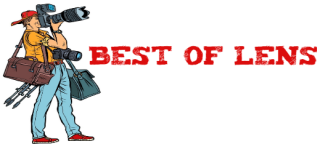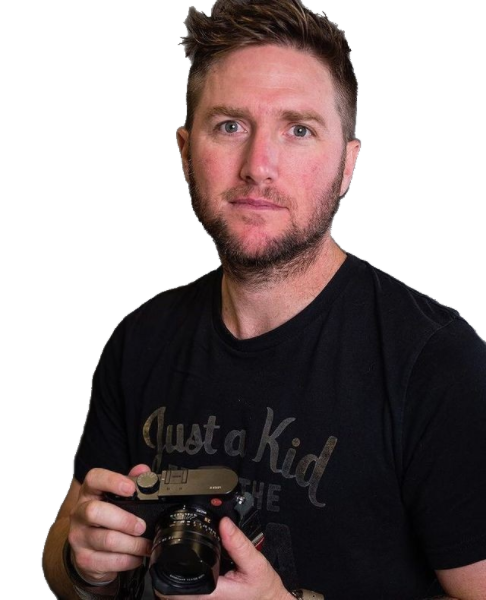Last Updated on December 5, 2023 by Sharon Advik
Night photography is one of my favorite subjects to shoot.
There’s something magical about how the world looks after the sun goes down.
The colors are more vibrant, and the mood is always different.
One of the keys to successful night photography is understanding how to use long exposures.
It takes a little practice to master this art, but the results are worth it.
This article will brief me on the best camera for night photography under $500.
In my photography career, I’ve learned that the best night photos often surprise you.
You never know what you’ll get until you see the finished product.
Which are the best Cameras for night photography under $500?
Here are my recommended top 3 Best Camera for Night Photography Under $500:-
Nikon D5500: (Best Camera for Night Photography Under $500)
I remember the first time I tried night photography, like yesterday.
I had just purchased my Nikon D5500 and was eager to test its features.
I chose this camera because it is the best for night photography.
So, I headed out into the city with my tripod and on a busy street corner.
The city’s lights were so bright and colorful, and I couldn’t wait to see how they would look through my lens.
So, I adjusted my settings and snapped my first long exposure.
When I saw the finished product, I was blown away.
The way the lights had blurred together and created these beautiful streaks was magical.
That was the moment I realized there’s no going back.
Features:
- Model: Nikon D5500
- Effective Megapixel: 24.2 MP
- Image sensor: APS-C
- ISO range: 100 – 25600
- Shutter speeds: 1/4000 seconds
- Storage: SD/SDHC/SDXC
- Image stabilizer: No
- Dimension: 124mm*97mm*70mm
- Weight: 420g
ISO/Shutter Speed:
The versatility of the ISO and shutter speed settings impressed me.
I started with a relatively low ISO, around 800, and a long shutter speed of about 30 seconds.
The photos were beautiful, with the city lights creating these incredible streaks and the stars appearing as little pinpricks of light in the sky.
Aperture/Field of View:
Another aspect I was impressed with on my first-night photography outing was the aperture and field of view.
I started by shooting with a relatively wide aperture, around f/2.8, which allowed a lot of light into the camera and gave me an excellent, shallow depth of field.
It allowed me to isolate my subject and create a sense of intimacy in my photos.
As I continued experimenting with the camera, I found that by closing down the aperture and increasing the f-stop, I could capture a greater depth of field and include more of the surroundings in my shots.
White Balance/Frame Rate:
One of the challenges of night photography is getting the white balance right, and I was pleasantly surprised by how well my camera handled this.
I set the white balance to “auto” and captured the city lights’ rich, warm tones without color casting.
It was beneficial when I was shooting in mixed lighting situations, where the color temperature of the light was changing rapidly.
Why is this the best camera?
As an experienced photographer, I can confidently say that it is one of the best cameras for night photography.
Its versatile ISO and shutter speed settings allow for a wide range of creative options, from capturing sharp, detailed images to creating beautiful light streaks.
The aperture and field of view also allowed me to isolate my subjects and capture sweeping vistas.
In addition, the white balance settings are reliable and will enable me to capture the true colors of my subjects.
Conclusion:
It is a powerful camera under the mentioned price and best suited for capturing the beauty of nightlife where you can play with the features to experience the actual colors in the black sky and the sweeping motions of nearby traffic.
Nikon D3300: (Best Camera for Night Photography Under $500)
As I continued my journey in night photography, I decided to head out and capture the beauty of the city’s street lights and passing cars.
So I grabbed my trusty Nikon D3300 camera, knowing it would be the perfect companion for this low-light adventure.
It is a reliable and capable camera, especially for night photography.
Its 24.2-megapixel sensor and wide ISO range allow me to capture crisp, clear shots, even in dimly lit environments.
Its lightweight and compact design makes it easy to carry around and take on the go.
Features
- Model: Nikon D3300
- Effective Megapixel: 24.2 MP
- Image sensor: APS-C, CMOS
- ISO range: 100-25600
- Shutter speeds: 1/4000 seconds
- Storage: SD/SDHC/SDXC
- Image stabilizer: No
- Dimension: 124mm*98mm*76mm
- Weight: 430g
ISO/Shutter Speed:
As I wandered the city streets, camera in hand, I carefully adjusted my ISO and shutter speed settings to ensure I captured the perfect shot.
First, I set the ISO to 3200, which gave me the sensitivity I needed to capture the scene in all its nocturnal glory.
Next, I turned my attention to the shutter speed.
I set it to 1/60th of a second, which allowed me to freeze the motion of the passing cars and streetlights while allowing enough light to reach the sensor.
Aperture/Field of View:
I set the aperture to f/2.8, which gave me a wide field of view and helped me to capture the entire street in all its glory.
I have been enjoying it and will surely you will like this as well.
White Balance/Frame Rate:
I accurately captured the street lamps’ warm yellowish light by adjusting the white balance to tungsten.
Then, I adjusted the frame rate to 4 fps.
By doing so, I could freeze the action of passing cars and capture every detail of the scene.
Why is this the best camera?
I can conclude that it is one of the best cameras for night photography through both research and personal experience.
Its DX-format CMOS sensor and wide ISO range allow for capturing crisp, detailed images of street lights or nearby vendors in low-light conditions.
Its fast, continuous shooting speed also came in handy for capturing fast-moving subjects like the passing cars nearby.
Conclusion:
After using this camera for several years, I can confidently say it is a top-notch camera for night photography.
Its performance in low light conditions has consistently impressed me and has never let me down when capturing fast-moving subjects.
Whether I’m shooting a busy street at night or a serene landscape under the stars, it has consistently delivered beautiful, high-quality images.
Its reliability and versatility make it a valuable tool in my photography kit.
I highly recommend it to any photographer looking to take their night photography to the next level.
Sony A6000: (Best Camera for Night Photography Under $500)
As a night photographer, I sought new tools and techniques to improve my work.
So when I heard about the Sony A6000, a mirrorless camera with impressive low-light performance, I decided to try it.
So, I headed out to the forest.
I wanted to test its capabilities in various lighting conditions, from the bright moonlight to the dimly lit trees.
As I set up my tripod and composed my shots, it quickly locked onto the birds resting in the trees and easily captured their every movement.
The stars and moon seemed to pop off the screen, each crisp and clear thanks to the camera’s 24.3 megapixel APS-C sensor.
Features:
- Model: Sony ALPHA A6000
- Effective Megapixel: 24.3 MP
- Image sensor: APS-C
- ISO range: 100-25600
- Shutter speeds: 1/4000 seconds
- Storage: SD/ SDHC/SDXC, Memory Stick Pro Duo/ Pro-HG Duo
- Image stabilizer: No
- Dimension: 120mm*67mm*45mm
- Weight: 344g
ISO/Shutter Speed:
I wanted to capture the fast and fluid movement of bats swinging through the trees.
So, I adjusted the ISO and shutter speed to match the dimly lit environment and was amazed by the results.
The camera could freeze the bats in mid-flight, capturing every detail of their wings as they flew through the air.
When I used a slower shutter speed, I could capture the blur of the bats’ wings as they flew, adding a dynamic element to the images.
Aperture/Field of View:
Now, I wanted to capture the stillness of trees in this vast field as they seemed to glow in the moonlight, and I wanted to capture the whole scene.
I adjusted the aperture to its widest setting.
It allowed me to pass as much light as possible, creating a shallow field depth.
At the same time, the wide field of view allowed me to fit the entire scene into the frame.
From the towering pines on the left to the smaller saplings on the right, I captured the full range of trees in a single shot.
White Balance/Frame Rate
With the help of white balance and frame rate, I captured the moon’s brightness and the stars twinkling in all their glory.
I adjusted the white balance on the camera to match the cool, blue tones of the night sky.
It made the moon and stars appear bright and vibrant rather than washed out or dull.
At the same time, its high frame rate of 60 fps allowed me to capture the stars as they twinkled in the sky.
By taking multiple shots in quick succession, I captured the subtle changes in the brightness of the stars over time.
Why is this the best camera?
Its impressive low-light performance, flexible ISO and shutter speed settings, wide aperture and field of view, and accurate white balance make it a versatile and reliable tool for various photography situations.
Conclusion:
Whether I’m shooting fast-moving subjects in dimly lit environments or capturing the subtle nuances of the night sky, this camera consistently delivers beautiful, high-quality results.
In addition, its compact size and lightweight design make it a convenient choice for on-the-go shooting.
Overall, it is a top-notch camera that has become a go-to choice for professional photographers.
Its exceptional performance and versatility make it a valuable addition to any photography kit.
CONCLUSION:
Alright, guys, that concludes all the cameras we will discuss today in this article.
Do you guys have any experience with these cameras? What are your thoughts on them?
Which is your Best Camera for Night Photography Under $500?
Is there a camera you love to use for night photography that I didn’t mention in this article?
Would you please leave your thoughts and comments below?
Related post:
Best cameras for night photography:
Best Sony Lens for Night Photography:
Best Nikon Lenses for Night Photography:
Best Canon Lens for Night Photography:
I am a Professional and Certified Digital Photographer born in the USA. I have been in this field of photography for 22 years, and in these years, I have used many photography lenses and Cameras, which I want to share here on this website about my experience. The idea for Bestoflens.com is to provide honest information about different Lenses and Camera products in the format of a “Best lenses for AYZ” list. I want this website to be the last destination for people to pick the best Cameras and lenses to fit their needs. You can find our unbiased reviews here on Bestoflens.






Your enthusiasm is undeniably infectious, leaving readers excited and enthusiastic to explore the engaging topics you present.